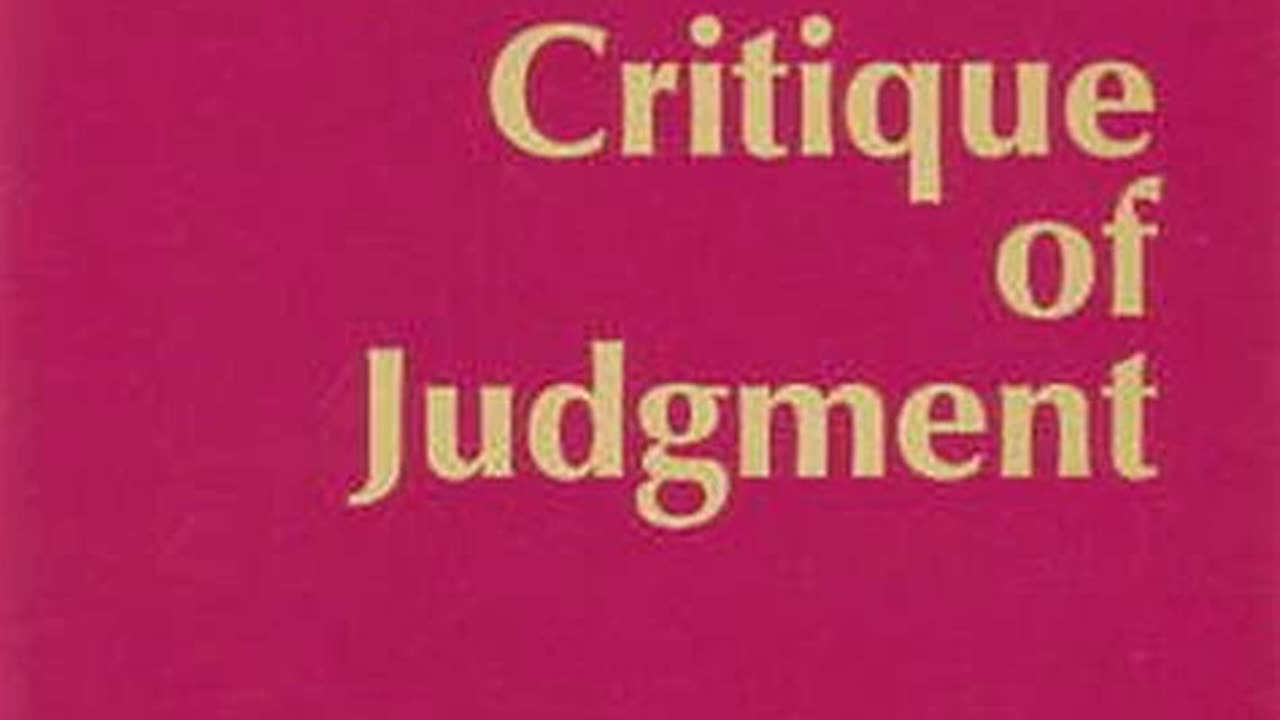Premium Only Content

Critique of Judgment by Immanuel Kant | Summary and Critique
Buy Here: https://amzn.to/4fMmK0p
"""Critique of Judgment"" is a philosophical work by German philosopher Immanuel Kant, first published in 1790. It is the third and final part of Kant's ""Critical Philosophy,"" which also includes ""Critique of Pure Reason"" and ""Critique of Practical Reason."" In ""Critique of Judgment,"" Kant explores the nature of aesthetic and teleological judgments, and their relationship to human understanding.
Kant's goal in ""Critique of Judgment"" is to provide a philosophical framework for understanding aesthetic and teleological judgments. He argues that aesthetic judgments, such as judgments of beauty, are based on subjective feelings and perceptions, rather than objective criteria. However, he also suggests that there are certain universal principles of taste that can be used to evaluate works of art. Teleological judgments, which concern the purpose or function of objects in the world, are similarly subjective, but are based on the assumption that natural objects have a purpose or end goal.
Kant's writing style in ""Critique of Judgment"" is dense and complex, and his ideas have been the subject of much debate and interpretation. However, the work has had a profound impact on subsequent philosophical and cultural thought, particularly in the areas of aesthetics and ethics. It has also influenced the development of fields such as literary theory and art criticism.
Overall, ""Critique of Judgment"" is a challenging and important work in the history of philosophy, exploring the nature of human understanding and the role of subjective judgments in our experience of the world. While its ideas may not be easy to grasp, its impact on subsequent thought has been profound, and it remains a key text in the study of aesthetics, ethics, and the philosophy of art."
-
 14:20
14:20
Timcast
2 hours agoTim Pool HAS JOINED Rumble Premium, HUGE ANNOUNCEMENT, Timcast Exclusive Content Is MOVING
42.8K156 -
 53:28
53:28
Candace Show Podcast
5 hours agoBecoming Brigitte: Jean-Michel Trogneux | Ep 4
74.7K41 -
 1:23:59
1:23:59
Redacted News
2 hours agoBREAKING! CORRUPT FBI CAUGHT HELPING ILLEGALS AVOID ICE ARRESTS, HOMAN READY TO PROSECUTE | Redacted
99.5K124 -
 1:18:39
1:18:39
Awaken With JP
1 day agoThe Latest in the Resurrection of America - LIES Ep 78
88.9K24 -
 1:55:58
1:55:58
Revenge of the Cis
4 hours agoEpisode 1445: Too Much Breakfast Club
26.3K3 -
 DVR
DVR
Game On!
4 hours agoPUMP THE BRAKES! It's college basketball season now!
13.7K1 -
 1:07:56
1:07:56
John Crump Live
18 hours agoLawyer Talk Ft. AOR (Backed Out) & Fudd Busters
6.83K1 -
 55:12
55:12
Benny Johnson
3 hours agoCongress Makes BOMBSHELL Announcement LIVE Now on Epstein List, JFK, UFOS | 'All Will Be REVEALED!'
117K125 -
 1:01:58
1:01:58
In The Litter Box w/ Jewels & Catturd
1 day ago30 Wasted Hours | In the Litter Box w/ Jewels & Catturd – Ep. 739 – 2/11/2025
67.6K28 -
 2:01:16
2:01:16
The Quartering
7 hours agoTrump's Genius Humiliation of USAID, the Truth About Ilhan Omar's Marriage to her Brother, and more
87.3K40